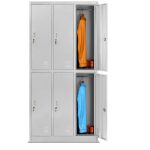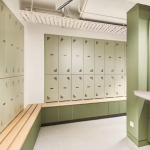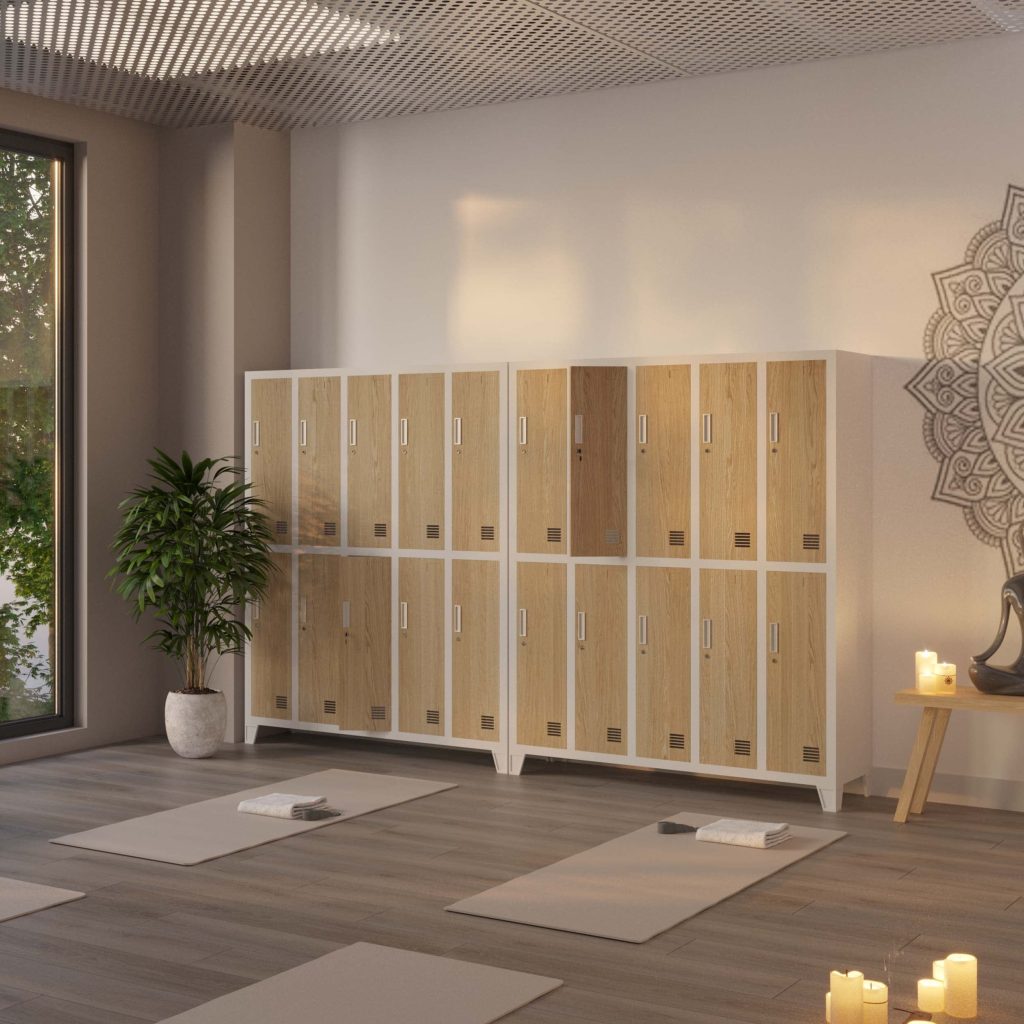
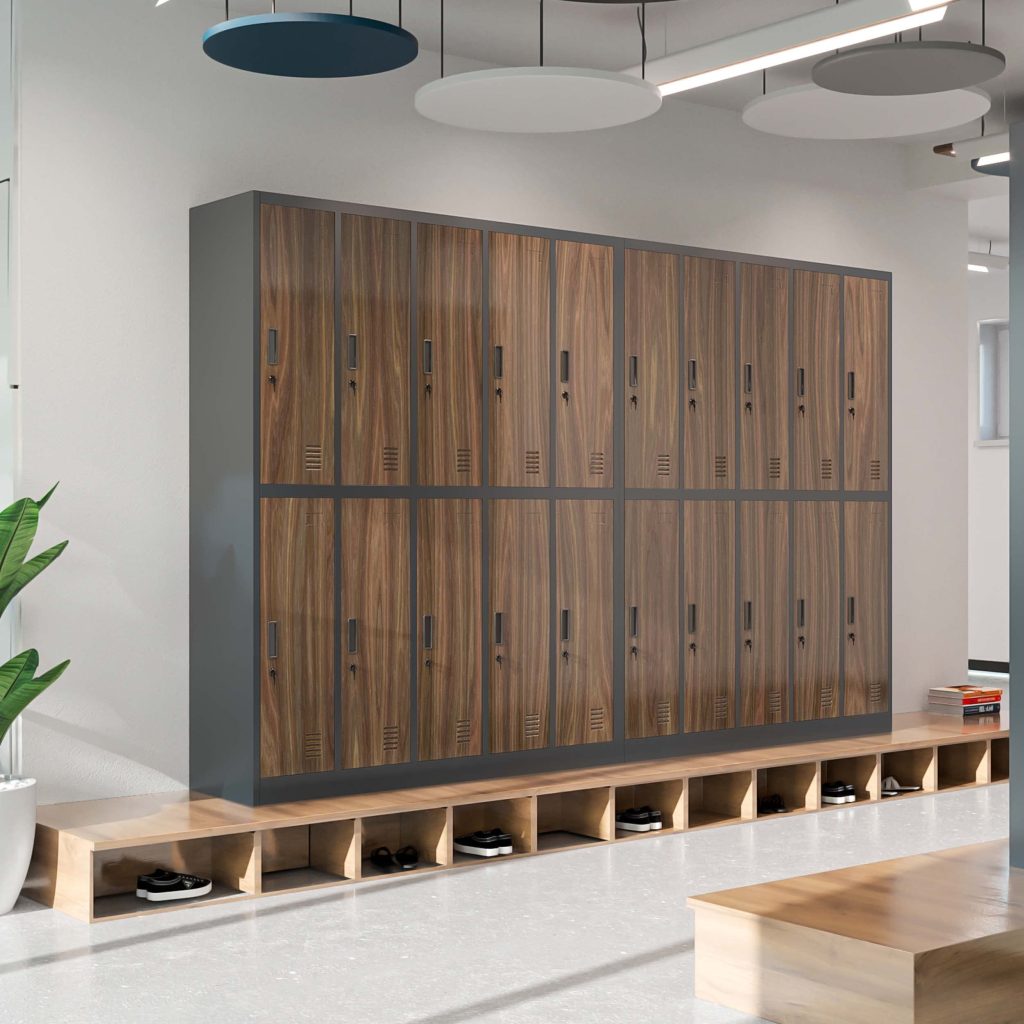
Choosing the right lockers for schools is about more than just providing storage—it’s about ensuring safety, promoting organization, and creating a functional environment for students and staff. In this guide, we’ll break down the key factors to consider and highlight the top locker types suited for schools.
Factors to Consider When Choosing Lockers for Schools
Selecting the right lockers involves a few considerations. Here are some important factors to keep in mind:
Safety and Security
School lockers must prioritize security to protect students’ belongings. Look for features like:
Robust Locking Mechanisms: Combination locks, key locks, or smart locks with encryption.
Reinforced Construction: Steel frames and doors resistant to tampering or forced entry.
Anti-Theft Design: Hidden hinges, recessed doors, and tamper-proof bolts.
Durability
Schools need lockers that withstand daily wear and tear. Opt for materials like:
Powder-Coated Steel: Resists rust, scratches, and graffiti.
Galvanized Steel: Ideal for humid environments (e.g., swimming pools or gyms).
High-Quality Plastic: Lightweight and corrosion-proof for younger students.
Storage Capacity and Flexibility
储物柜应适应不同的存储需求:
Multi-Tier Designs: Maximize vertical space for books, bags, and sports gear.
可调节搁板:定制用于放置笔记本电脑、实验室设备或乐器的隔间。
Ventilation: Perforated doors for airflow to prevent odors (great for gyms).
Cost-Effectiveness
Balance quality with budget constraints:
Long-Term Investment: Durable steel lockers may cost more upfront, but save money over time.
Modular Systems: Expandable locker banks that grow with the school’s needs.
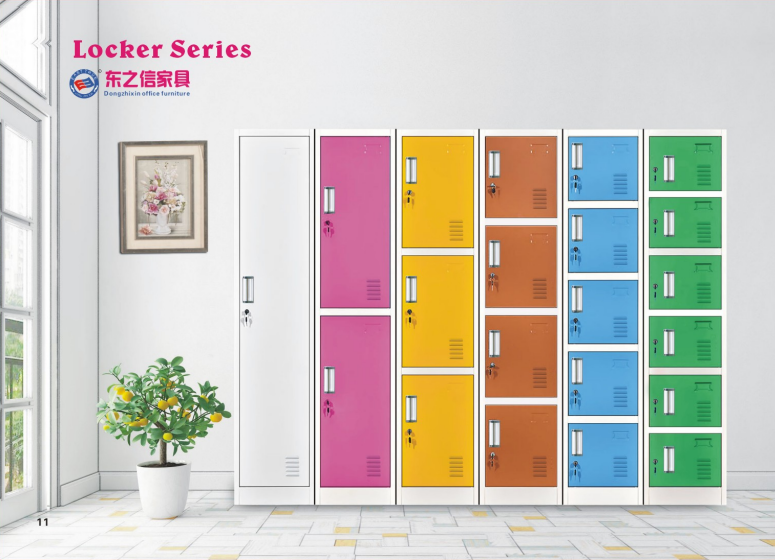
Common Types of Lockers for Schools
Standard Steel Lockers
Best for: General-purpose storage in corridors or classrooms.
Pros: Affordable, easy to maintain, and highly durable.
Features: Powder-coated finishes, customizable colors, and optional ventilation.
Ventilated Lockers
Best for: Gymnasiums, sports facilities, or wet environments.
Pros: Prevent mold and odors with airflow-friendly perforations.
Materials: Galvanized steel or rust-resistant coated steel.
Smart Lockers
Best for: Tech-forward schools aiming for efficiency.
Pros of smart lockers: RFID, fingerprint, or app-based access; remote management via IoT.
Use Cases: Secure storage for tablets, laptops, or sensitive documents.
Combination Lockers
Best for: Reducing key management hassles.
Pros: Students set their the codes; no lost keys.
Security: Choose models with anti-pry latches and reinforced doors.
Customizable Lockers
Best for: Unique spaces or specialized needs (e.g., science labs or music rooms).
Options: Add hooks, shelves, charging ports, or anti-theft compartments.
Aesthetic Flexibility: Match school colors or branding.
Guide to Choosing School Lockers for Different Age Groups
Selecting lockers for schools requires matching locker types to students’ ages, heights, usage habits, and safety needs. Below are recommendations tailored to preschool, elementary school, middle school, and high school/college students:
Preschool (3–6 years old)
Key Needs
Safety: Rounded edges to prevent injuries.
Accessibility: Height-adjusted for easy access.
Engagement: Bright colors and playful designs.
Recommended Types: Plastic Lockers (ABS Material)
Advantages: Lightweight, no sharp edges, waterproof, and corrosion-resistant (ideal for humid areas like bathrooms).
Dimensions: Height 1000–1200 mm (easy reach for children); Depth 300–400 mm (for small items like clothes and backpacks).
Design Features: Rounded doors, cartoon patterns, or colorful finishes.
Elementary School (7–12 years old)
Key Needs
Durability: Withstands frequent use.
Compartmentalization: Separate spaces for books, stationery, and sports gear.
Stability: Secure structure to prevent tipping.
Recommended Types: Steel Lockers (Economy Grade)
Advantages: Impact-resistant with scratch-proof coatings (e.g., matte white or gray).
Dimensions: Height 1400–1600 mm (adjusts to growing heights); Depth 400–450 mm (fits backpacks and sports equipment).
Design Features: Internal shelves: Upper hooks for coats, lower compartments for shoes.Ventilation holes: Reduces odors (e.g., post-PE class storage).
Middle School (13–15 years old)
Key Needs
Privacy: Reliable locks for personal belongings.
Large Capacity: Stores books, electronics, and sports gear.
Heavy-Duty Build: Resists wear and tear.
Recommended Types: Reinforced Steel Lockers
Advantages: 0.6–0.8 mm cold-rolled steel plates with rust and corrosion resistance.
Dimensions: Height 1800 mm (standard adult height); Width 500–600 mm (for bulkier items).
Design Features: Combination or mechanical locks: Reduces key management hassles.Reinforced shelves: Supports ≥50 kg (e.g., musical instruments or lab equipment).
High School/College (16+ years old)
Key Needs
Multifunctionality: Customizable compartments.
Smart Features: Optional smart locks or charging ports.
Aesthetic Appeal: Matches campus aesthetics.
Recommended Types: Customizable Steel Lockers
Advantages: Modular designs (e.g., triple-door units, adjustable shelves).
Dimensions: Depth 500 mm (fits suitcases or winter coats); Interior Hanging rods, adjustable shelves, and shoe racks.
Charging ports: Built-in USB outlets for devices.
Custom colors: Matches school branding (e.g., navy blue or forest green).
General Considerations
Installation & Maintenance:
Secure anchoring: Use expansion bolts to fix lockers to walls/floors.
Regular inspections: Check locks, hinges, and coatings each semester.
Material Priorities:
Humid areas (pools, bathrooms): Prioritize ABS plastic or galvanized steel.
High-traffic zones (hallways): Use thick steel plates (≥0.8 mm).
By aligning locker designs with age-specific requirements, schools can create safe, functional, and long-lasting storage solutions that grow with students’ needs.



